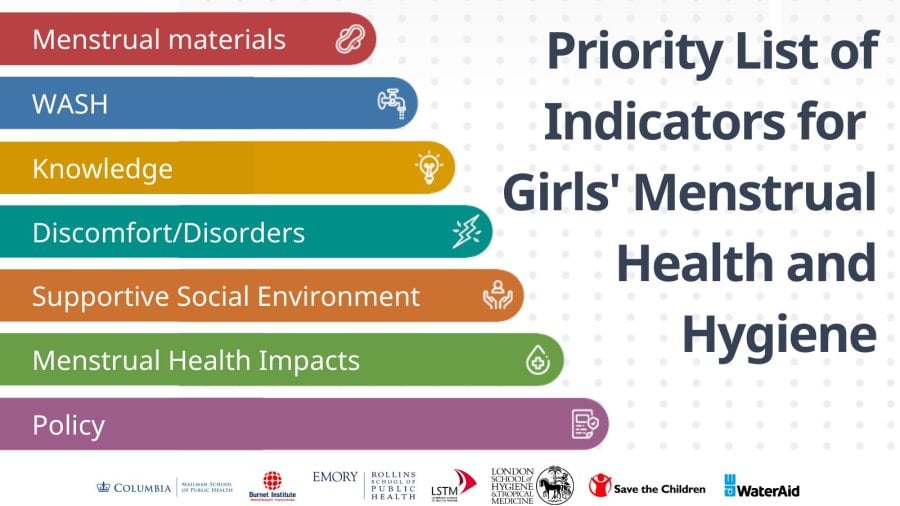
A new list of priority indicators and measures for advancing girls' menstrual health and hygiene (MHH) is now freely available online.
The Priority List of Indicators for Girls’ Menstrual Health and Hygiene: Technical Guidance for National Monitoring will enable comparability across countries and over time, supporting monitoring and evaluation of menstrual health and hygiene policies and programmes globally.
The guidance was developed by LSHTM, with members of the Global MHH Monitoring Group, which includes the Mailman School of Public Health, Columbia University; the Burnet Institute; Rollins School of Public Health, Emory University; Liverpool School of Tropical Medicine; Save the Children; and WaterAid in collaboration with the Global Menstrual Collective. This work was supported by The Bill & Melinda Gates Foundation.
The Priority List of Indicators for Girls’ MHH is an important step forward in advancing progress towards equitable menstrual health. It is based on current evidence and intended to be a starting point to support countries to monitor menstrual health and hygiene for adolescent girls in and out of school.
MHH is increasingly recognised as a cross-cutting issue with implications for health, wellbeing, rights, equality, education and the environment. It therefore plays a crucial role in achieving the Sustainable Development Goals (SDGs) but until now, a lack of standardised indicators for MHH has been a barrier to progress towards these global targets.
At the national level, inadequate indicators and measures make it difficult to fully understand the MHH needs of women, girls and people who menstruate, plan and target investments to address them; and prevents tracking of progress against programmes and policies designed to support these needs. The new guidance helps to fill this knowledge and evidence gap and can support improved accountability.
The short list includes 21 indicators and related measures across seven key domains: materials; water, sanitation & hygiene (WASH); knowledge; discomfort/disorders; supportive social environment; menstrual health impacts; and policy. It also includes notes on which level (individual, school, national) data should be collected at for each indicator with guidance for data collection.
The recommended list was developed through consultation with global MHH experts and country stakeholders. Indicators were selected based on their feasibility, relevance and current evidence. The guidance focuses particularly on adolescent girls, as the strongest evidence exists for this group, although some indicators and measures can be adapted for adult women.
The Global MHH Monitoring Group did not intend for this list to be comprehensive. More work is needed to improve measurement and monitoring efforts on MHH at the national level and beyond. However, it is hoped that the list provides an important foundation on which future MHH guidance can be built.
Guidance
Our postgraduate taught courses provide health practitioners, clinicians, policy-makers, scientists and recent graduates with a world-class qualification in public and global health.
If you are coming to LSHTM to study a distance learning programme (PG Cert, PG Dip, MSc or individual modules) starting in 2024, you may be eligible for a 5% discount on your tuition fees.
These fee reduction schemes are available for a limited time only.
